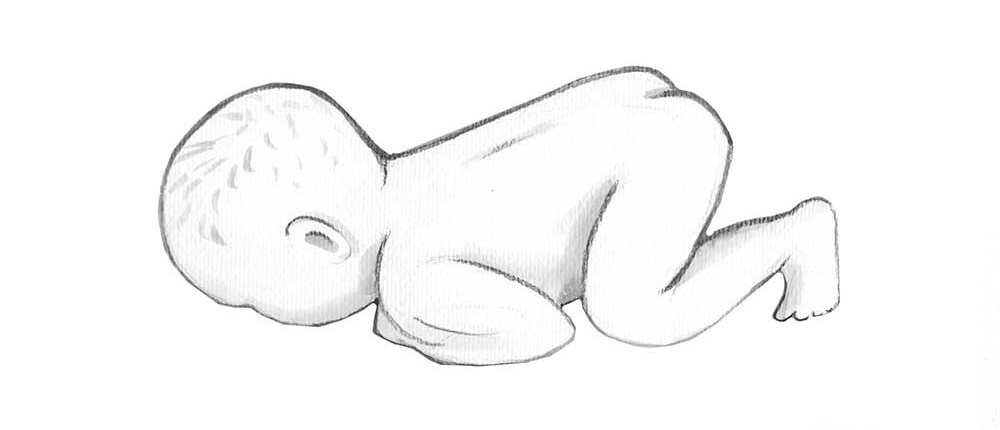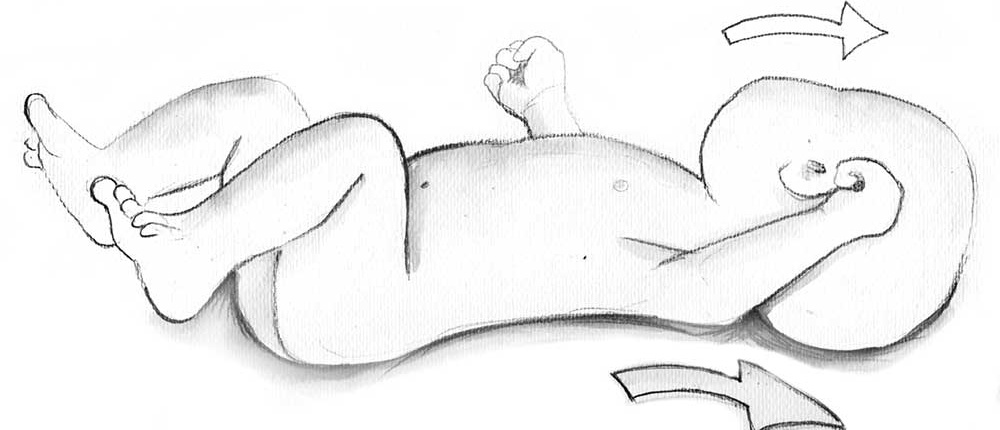Tonic Labyrinth Reflex (TLR)
The reflex is activated when the head position changes in relation to the body’s midline. Bending the head forward triggers the TLR forward, while overextending it backward in the supine position triggers the TLR backward.
Explanations Tonic Labyrinth Reflex (TLR)
The reflex appears in two positions:
In a child lying on their stomach, the neck, legs, and arms are bent. It is already active in utero.
In a child lying on their back, the extensor muscles are active. Legs and arms are straightened. The movement is triggered during birth. Muscle tone is trained. The cooperation between flexors and extensors is practiced.
The reflex prepares the baby for the movements of rolling and later for crawling on all fours, standing, and walking, meaning, the proper handling of gravity is stimulated. If the reflex is not integrated, the body will never be able to relax automatically. The head position reflexes will not have the chance to develop appropriately. They are supposed to control changes in head and body posture in space and initiate the necessary adaptive reactions throughout our entire lives. If the TLR is not fully integrated, these highly specialized control systems will never reach their full effectiveness. The child’s fundamental sense of balance will be impaired, and their visual field will be unstable.
Moreover, stretching the neck results in tension of all extensor muscles, while bending the neck results in tension of all flexor muscles.
If the reflex is not fully integrated, the following abnormalities may occur:
- Postural deformities
- Muscle tension
- Dysfunctions of the vestibular system
- Balance disorders
- Lack of coordination of movement
- Difficulties with time and space perception
- Lack of understanding of cause and effect
- Sensory integration problems
- Lack of attention
- Slowed reaction / slow work
- Self-checking of written work is poor
- Letters are twisted
- Copying from the blackboard is exhausting
- Poor short-term memory
- Problems with the figure-ground distinction
- Hearing processing limited
Symptoms of TLR forward:
- Travel sickness
- Limited sense of time
- Limited ability to organize
- Flaccid muscle tone
- Poor posture
Symptoms of TLR backward:
- Tiptoe walk
- Tight muscle tone
- Noticeable holding and positioning reactions
- Spatial perception problems
- Prevention of crossover movements
Emergence: 12 weeks intrauterine to birth.
Duration: Active from 2nd month of life to 4th month.
Integration: In flexion 3rd – 4th month
In extension 2nd – 4th month
More interesting knowledge…
… about early childhood reflexes, as well as concrete exercises for subsequent integration and centering can be found in my course BalanceHIRO®.



